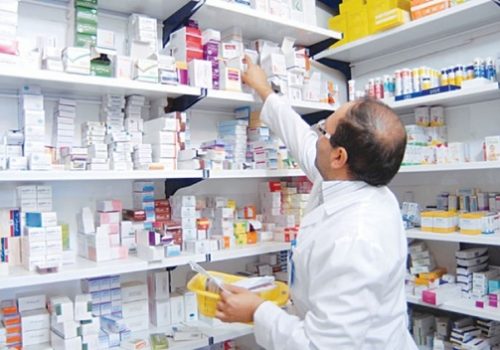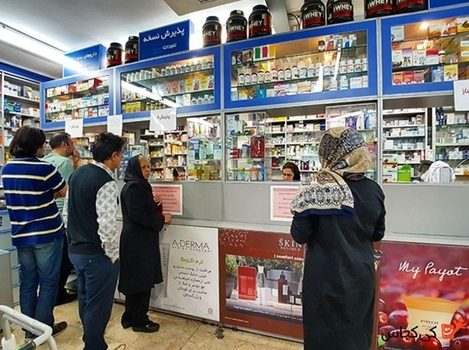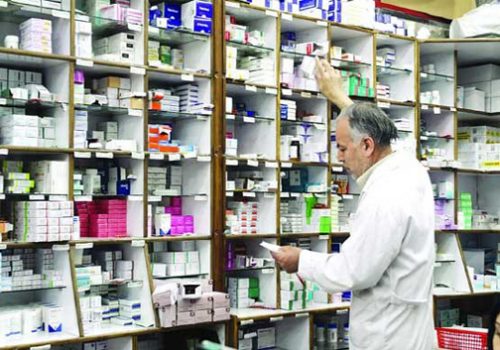Under sanctions, Iran’s black market for medicine grows
Iran is currently fighting on two fronts: against the COVID-19 epidemic, which has resulted in the highest death toll in the Middle East, and against economic sanctions that have deprived it of an estimated $150 billion since the Trump administration withdrew from the Joint Comprehensive Plan of Action (JCPOA) in May 2018.
Among the consequences has been a revitalized Iranian medical black market that had been dormant since the signing of the JCPOA in 2015. This renewed frontier reflects hyperinflation and supply chain issues from sanctions, internal state mismanagement, and the ongoing coronavirus emergency. While essential medicines and medical equipment are technically spared from US sanctions under a humanitarian exemption, their availability is sharply curtailed by the effect of sanctions on Iran’s banking and commercial sectors, reductions in manufacturing and trade capacity—especially with European partners—and foreign exchange shortages.
In early October, the Trump administration sanctioned eighteen Iranian banks in an attempt to cripple and cause the collapse of Iran’s economy. The ripple effect on medical supply chains was apparent, as Iran became even more removed from global financial markets. The United States’ interception of an Iranian oil shipment to Venezuela, which the Americans subsequently sold for $40 million, was another dagger in Iran’s economic heart.
Underground channels are now the only way for most poor and middle-class Iranians to get needed drugs like insulin pens and chemotherapy medicines. Even prior to COVID-19, Iran’s health system was reeling from the impact of sanctions, restricting Tehran’s ability to raise capital and import pharmaceutical ingredients. Last year, Iran recorded its lowest rate of economic growth in twenty years at -9.5 percent and its highest rate of inflation at +35.7 percent. Hyperinflation combined with stagnant growth impedes adequate prevention, diagnosis, and treatment of COVID-19 while precluding Iran from subsidizing the cost of treatment. Beginning in June, the Iranian media has reported cases of desperate individuals going into debt to pay for treatment at private hospitals because public ones are too crowded and lack supplies.
Furthermore, astronomical increases in shipping insurance costs due to US sanctions have made it harder to import necessary ingredients. This is in part because Iran’s central bank was listed as a Specially Designated Global Terrorist by the US Treasury Department Office of Foreign Assets Control in September 2019. Sanctions have also contributed to the collapse of Iran’s currency, the rial, which has made imports even more expensive.
Many drug expenses are not covered by public health insurance. This means that uninsured Iranians must pay inflated prices out of pocket for antiviral drugs like remdesivir and favipiravir, a Chinese-made generic version of the anti-flu drug avigan, creating the perfect environment for a medical black market. However, Iran has been able to make strides in its domestic pharmaceutical production by beginning to manufacture both antiviral drugs.
India and China have traditionally served as the primary origins for black market medical products. Concoctions that are herbal or “alternative medicine” are problematic In many cases because they are not on par with European pharmaceuticals and frequently cause adverse reactions among desperate Iranians who take them.
Black market supplies range from life-saving drugs to personal protective equipment, such as surgical masks, gloves, and gowns. Insulin is available on the black market at eight times the pharmacy price, if available. Trafficking activity is incentivized due to relatively low fixed government rates of the dollar at around 4,200 tomans for essential imports. These traffickers then export the drugs at normal exchange rate prices at around 29,000 tomans to the dollar to make a profit. The alternative for Iranians is to use insulin pens made with imported ingredients from China, which have been banned in the US, Australia, and the European Union due to safety concerns.
The initial arrival of COVID in Iran caused hoarding by a panicked population in a medical supply-chain environment that was already struggling. Iranian authorities, including Attorney General Mohammad Jaffar Montazeri, asserted strong warnings against hoarding and price gouging even before the pandemic. Mohsen Jalavati, vice-chair of the Transparency and Justice Watch Organization, spoke to the state-run Channel One in August 2018, stating, “One of the import companies benefitting from low rate dollar for import of medicines had recently threatened the Deputy Minister of Health that if the prices of its medicines are not raised by 60 percent, these items would not be released from customs to cause a shortage in the country.” Desperate hospitals have turned to the black market to meet needs for protective equipment.
Flu season is fast approaching in tandem with the coronavirus pandemic. Iran does not produce flu vaccines domestically, causing it to announce that they would import between ten and twelve million doses. The delivery of an initial 2.2 million doses from external sources has been stalled by the October banking sanctions. Only 2.5 million units of influenza vaccine have been received by the Health Ministry, awaiting distribution to priority demographics such as the elderly and those with underlying health conditions.
“The government pays around $2.50 for a dose of imported flu vaccine,” Dr. Mojtaba Sadat-Ahmari, an Iran-based pharmacist, told Al-Mashareq newspaper. “But flu shots are being pre-sold upward of $10 a shot on the black market across the country, especially in Tehran. It is unclear who is selling these vaccines.”
Hurdles to flu vaccine access are not Iran’s only import challenge, as roadblocks remain for Iran’s attempts to purchase the latest and most crucial health commodity—a COVID-19 vaccine. Iran joined COVAX, the World Health Organization (WHO) initiative towards equitable vaccine distribution, in October. Even though the US announced its planned withdrawal from WHO in May, it still impedes Iran’s ability to access vaccines. A COVAX spokesperson has stated that Iran faces no legal obstacles in purchasing the COVID-19 vaccine, since it has obtained the necessary authorization from the US Treasury Department’s Office of Foreign Assets Oversight. However, the global financial sector and institutions like the International Monetary Fund are still under the pressure of complex and multilayered US bank sanctions that discourage them to do any transactions with Iran. As a result, Iran may have to rely on its own vaccine development or lower-quality vaccines from Russia and India.
There are clear victors and losers in this two-front battle. The victors are smugglers, peddlers, dealers, and some government-owned businesses, as well as Indian and Chinese pharmaceutical companies. The losers are the Iranian people, Western pharmaceutical companies, and the independent private sector of importers and manufacturers in Iran. As the Iranian people continue to weather sanctions, COVID-19, a deteriorating health system, an approaching flu season, and rampant inflation, each day becomes a matter of how to survive in uncertain times. For the traffickers, however, each day is a new opportunity to make more money off Iranians trying to weather the storm.
Saumaun Heiat received his MA from the Elliott School of International Affairs, focusing on International Development and Middle East Studies. Follow him on Twitter: @saumaun1.
Image: Hadiyeh, 4, an Iranian child who is affected by the coronavirus disease (COVID-19), looks at her mother at Hazrate Ali Asghar Hospital, in Tehran, Iran September 27, 2020. Picture taken September 27, 2020. Majid Asgaripour/WANA (West Asia News Agency) via REUTERS


